
Table of Contents
What is the Tug of War game?
Tug of War game or rope pulling is a team sport. We have played it for millennia worldwide. Two teams play “rope pulling.”
Each team holds one end of the rope, bringing the rope toward their side. They try to pull the middle mark over a line to win.
Eight tug of war game players pull the rope together. They use their strength and teamwork to win against the other team.
They use their muscles and work together to outmuscle the other team. The players employ strategic thinking and teamwork to gain an advantage.
Tug of war is a fun game played everywhere. It makes you strong, improves balance, and teaches teamwork. People enjoy it in parks, schools, and competitions.
Young cricket players can improve their skills by playing tug of war. This fun game teaches them teamwork and strength.
Tug of War game is a popular sport. It represents togetherness, collaboration, and rivalry. We know it as “रस्सा कशी (Rassa Kashi)” in Hindi. The term ” (Rassa) ” refers to the rope used in the game, but ” (Kashi) signifies pull.
It is a classic game performed by two teams, each tugging on opposing ends of the rope to overcome their opponents. People work together in the Tug of War. They use strength and teamwork. This makes the game popular in India.
Tug of war game in Malayalam is വടംവലി (pronounced as “vadham valli”). Two teams pull a long rope in opposite directions. They try to make the other team cross the center line to win. The team that pulls the other team across the line wins.
The word വടം means “rope,” and “വലി” means “to pull.” So, വടംവലി means “rope pulling.”
People in Kerala, India, love playing the Tug of War game, a popular sport, during festivals and community events. It is a great way to test strength and teamwork.
The objective of the rope pulling game
In a tug-of-war game or rope pulling game, we discuss the objective below:
1. Team Competition:
Tug-of-war or rope pulling game is a sport in which two teams compete against each other. The main goal is to drag the opponent’s marker over the center line.
2. Strength and Coordination:
The game has tests of strength where players need to be strong, keep going, and move together. To win, the team must work as one and help each other.
3. Pulling strength:
The goal is to pull the rope together as a team. Pull the marker hard to cross the line—you win! If you do this, you will be declared the winner.
4. Strategy and Technique:
Teams pull the rope in different ways to win. They use special grips and stand strong to stay ahead.
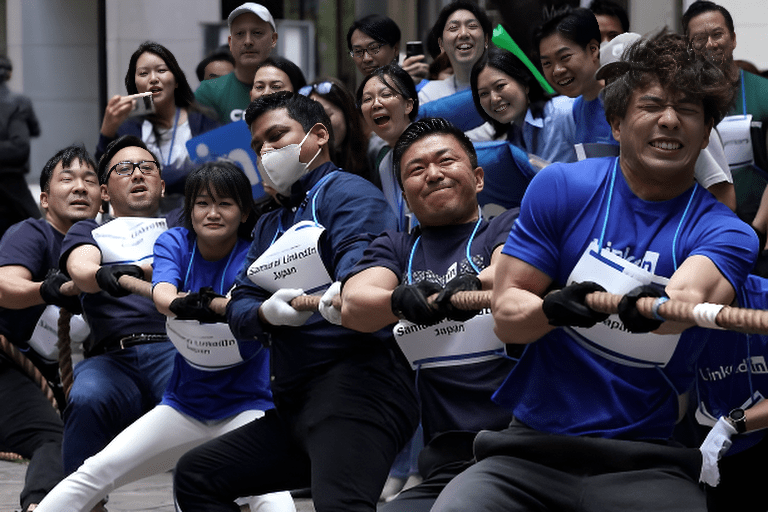
5. Sportsmanship:
Tug-of-war is a fun athletic contest between two teams where everyone plays fair. Players must respect each other and follow the rules to enjoy the game.
6. Physical Fitness:
Tug-of-War requires strength, muscular endurance, and core stability to develop and maintain physical fitness.
7. Mental Focus:
Teams must work together and stay focused. They need to react quickly when the other team changes their moves.
8. Fun and Recreation:
People enjoy Tug-of-War as a leisure sport. It allows them to engage in friendly rivalry while they work together towards a shared rope.
History
People have played Tug of War for a long time, with evidence of the sport in ancient societies around the world. There is no single historical point of origin for the game of Tug of War.
Egypt in the past
Archaeological evidence shows that people performed the tug of war in ancient Egypt as early as 2000 BC. A relief from Beni Hasan’s tomb depicts two teams of men tugging on a rope.
Greece in the past
In ancient Greece, tug of war was also a popular pastime. The ancient Olympic Games had tug of war as early as 500 BC. Armies also used it to train soldiers.
China in the past
The tug of war was called “hook pulling” () in ancient China. It was employed as a military training exercise for warriors, as well as a popular folk game.
India in the past
In ancient India, tug of war was also a popular pastime. The Mahabharata, an ancient Indian story, talks about this.
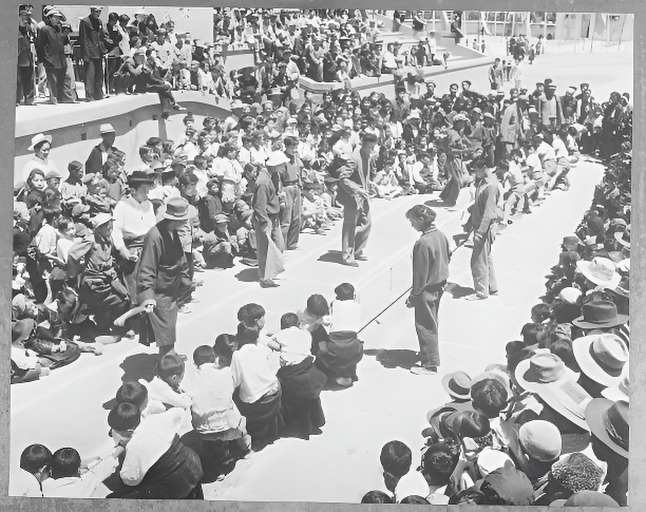
Europe in the Middle Ages
Tug of war was still popular throughout medieval Europe. It was frequently employed to settle disputes or celebrate holidays.
Tug of war in the modern era
The contemporary sport of tug of war arose in the nineteenth century. In the 1860s, the first tug-of-war tournaments were staged in the United Kingdom, and the sport swiftly spread to other countries.
The Olympics’ Tug of Conflict
Tug of War was an Olympic event from 1900 to 1920. It was phased out following the 1920 Games because it was deemed ineffective.
Today is a tug of war
Tug of War is still a popular sport today, with events ranging from local clubs to worldwide competitions. The Tug of War International Federation (TWIF) is the sport’s governing organization, organizing world championships and other international tournaments.
Governing Body
The Tug of War International Federation (TWIF) governs the sport of tug of war or rope pulling. TWIF is in charge of governing and regulating the sport on a global scale.
Its headquarters are in Orfordville, Wisconsin, and it presently has 72 member nations. Anton Rabe, from Paarl, South Africa, is the president of TWIF.
Some countries, like the Home Countries, compete separately in tug of war. Their national identity and past rivalries allow them to play as independent teams.
Tug of War generally has 8 participants. However, several rule variants allow for a varied number of players. In certain events, for example, there are weight divisions, and each team must have a combined weight that fits within a specified range. In some competitions, the number of players in a group may be less than eight.
Tug of war used to be an Olympic sport, but people slowly lost interest in it. Other sports became more thrilling, and the number of countries participating in tug-of-war decreased.
The game wasn’t popular everywhere—only in a few places. The Olympics wanted sports that the whole world loved.
As the Games grew, they added newer, more modern sports. Tug-of-war didn’t fit as well anymore.
It also needed a lot of space and special gear, which made it hard to organize. The Olympics preferred easier, more flexible sports.
Over time, new games took its place, and tug of war was no longer in the Olympics. The goal was to keep the Games fresh and fun for everyone!
Types of equipment
Tug of war is a simple sport that only takes one piece of equipment: a rope. However, the rope must meet a few certain conditions to be termed regulated. Here’s some information about the equipment used in a tug of war:
Tug of War Rope:

A rope is the main piece of equipment in a Tug-of-War game. It is usually a story and durable. In professional tug of war games, the rope is made of strong natural or synthetic fibers.
It can handle the hard pulling from the teams. Tug-of-war ropes are typically 10 to 12.5 cm (4 to 5 inches) in circumference.
Tug of War Boots:
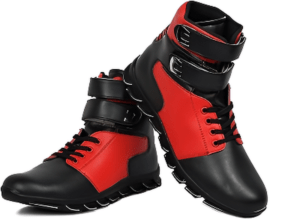
Pullers in a tug of war frequently wear customized boots to improve traction and grip on the ground. These boots start as ski or skate boots. Workers take off the blades or wheels. They add a firm bottom and a metal heel plate. Now they are new boots.
The boots must adhere to the Tug of War International Federation (TWIF) guidelines.
Team uniforms:
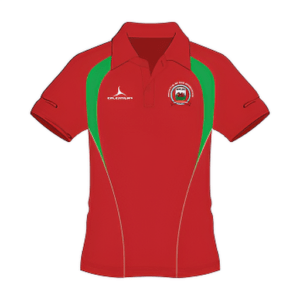
During a game, we use uniforms to separate teams and generally wear similar uniforms or jerseys. It depend on the team to team. Otherwise, you can wear any type of uniform in the general case.
Tug of War game rules
Tug of war game rules might be simple: pull harder than the other team. But behind those ropes lies a hidden battlefield, where cunning strategy can triumph over brute strength.
Forget fancy footwork. Here, victory demands teamwork, tactics, and a touch of psychological warfare.
Learn the tug-of-war dance. Lean together, pull hard at the right time, and trick the other team. Even if they seem stronger, you can still win!
Prepare to outsmart, outplay, and claim the ultimate bragging rights: tug of war champions! Now, let’s strategize – the rope awaits!
The Rope
- The game demands the use of a single piece of equipment, a rope.
- Before beginning the game, the red mark on the rope must be at a perpendicular angle to the precise center point on the ground.
- On both sides of the rope, there is a white Mark 13 feet apart from the red mark.
- To win the game, one of the sides with the white mark must cross the center point.
Teams
- Each tug-of-war team can have up to eight players. The total weight of all team members must stay under the category’s limit.
- To compete fairly and safely, teams must follow these standards.
- The weight and team size limitations are in place to promote a fair playing field for all athletes.
- To keep under the weight limitations and maximize their chances of victory, teams must carefully pick their members.
- Follow these simple rules to run fair and smooth tug-of-war competitions. They keep the game fun and honest for everyone.
Field & Marking
- The game must take place on a grassy stretch of ground that is flat.
- A line is drawn in the center of the playing area. Players must place the rope’s center over this line.
- Two further markings must be put on either side of the rope at a distance of 4 meters from the middle line. These markers show where each team’s first member will stand.
Playing Rules
- Before the game begins, the center of the rope must perfectly coincide with the center mark on the ground. When the referee blows the whistle, both sides may begin tugging the rope toward their respective zones.
- The basic purpose of the game is for each team to successfully drag the rope and members of the other squad to their side.
- If the second mark crosses the center line, that team wins. That’s how the game ends.
- The team that successfully pulls the rope and the other team past the second mark to their territory is considered the winner.
Competition
- Before the game begins, the center of the rope must perfectly coincide with the center mark on the ground. When the referee blows the whistle, both sides may begin tugging the rope toward their respective zones.
- The basic purpose of the game is for each team to successfully drag the rope and members of the other squad to their side.
- The game is won when the second mark on the rope passes the center line. This rule decides the winner.
- The team that successfully pulls the rope and the other team past the second mark to their territory is considered the winner.
Fouls
- To prevent infractions that might result in disqualifications, the game needs a precise method to be used.
- A common foul in the game is “locking.” This happens when a player bends their elbow below their knee while pulling the rope.
- Another foul occurs when a player remains on the ground for a lengthy amount of time throughout the game.
- Players must follow the rules to play fair. If they break the rules, they may lose the game.
How to play Tug of War
Get step by step guide on how to play tug-of-war.
- Assemble Your Team
Bring your strongest teammates for tug of war. You must work together and move as one. Ensure that your team comprises a perfect blend of raw power, tenacity, and strategy. Remember, a well-balanced team can overcome even the most formidable opponents.
- Equip Yourself
Next, equip your team with the proper gear. Each team member should don sturdy, non-slip footwear, ideally spiked shoes that can dig into the ground for better traction.
Wear tight-fitting uniforms. They should be comfortable and let you move freely. Tight clothes also stop opponents from grabbing loose fabric. - Find the Perfect Spot
Locate a level and well-maintained playing field with ample space for both teams to stand comfortably. The surface should be firm, ideally grass or a rubberized surface, to ensure secure footing and minimize injuries.
- Set Up the Rope
Secure a sturdy and regulation-compliant tug-of-war rope. The rope should have a marked center point and be long enough to accommodate your team’s size. At the center, attach a flag or ribbon to indicate the winning side once the battle concludes.
- Grip the Rope
As the teams take their positions, ensure that each team member finds their grip on the rope. The standard grip involves wrapping the rope around your hands, creating a secure connection that won’t easily slip. Communication is key, so establish a prearranged signal for when everyone is ready.
- Assume the Stance
Plant your feet firmly. Stay balanced. Use your leg strength to help your team pull. Maintain a low, crouched stance, leaning slightly backward to optimize leverage.
- Ready, Set, Pull!
The battle is about to commence! With the sound of the referee’s whistle, unleash your might and start pulling with all your strength. Communicate with your team, coordinating your efforts to achieve maximum pulling power and synchronization.
- Strategy and Technique
Raw power alone won’t secure victory in the professional tug of war. Pull the rope fast together to surprise the other team. Use strong, quick tugs to make them lose balance. Timing is crucial, so consider employing a strategy that plays to your team’s strengths.
- Stay Resilient and Persistent
Tug of war is not only about initial bursts of strength but also about enduring the pressure. Dig deep, stay persistent, and never give up. The tide of the battle can turn at any moment, and true champions demonstrate unwavering resilience.
- Celebrate the Victory
When the referee signals the victory by raising the flag of your team, rejoice in the glory of your collective triumph. Respect your opponents. Thank them for the tough game. Good competition helps you improve.
This step-by-step guide equips you to enter the thrilling world of professional tug of war.
Gather your team. Use your strength. Enjoy this fun, classic game. People everywhere love playing it.
Good luck, and may the tug-of-war gods be ever in your favor!
What are the technical requirements regarding how the roped is pulled and positiomned?
Success in tug-of-war depends on precise rope handling, not just raw power. Teams must master the official setup and pulling techniques to compete effectively.
The official competition rope has an 11-centimeter circumference. A prominent red mark indicates its center, with two white marks placed four meters to either side. These markers provide a clear visual reference for measuring a team’s progress.
To begin a match, the rope’s center mark must align perfectly with a central line on the ground. Competitors grip the rope and pull, striving to drag the white marker on their opponent’s side across the centerline to secure a win.
Regulations mandate an underhand grip for all pulling action. A critical rule is that no puller’s elbow may go below their knee during the contest. Violating this technique constitutes a foul and can result in penalties. Adhering to these standards guarantees fair competition and validates every victory.
1) Build a strong team by having motivated, coordinated, and capable individuals. The number of people matters, but quality matters more.
2) Ensure everyone stands with feet shoulder-width apart for stability and power, preventing slips.
3) Lower your stance into a squat, gaining more leverage and stability.
4) Make sure all team members pull together equally in one direction, creating unity and preventing rope breaks.
5) Persist and work hard; tug of war requires endurance. Keep pulling till the end, even if the other team is winning.
Tug of War Game Strategy & Tactics
Tug of war strategy isn’t just about brute strength; it’s about tactics, teamwork, and a touch of cunning. It’s about turning a simple rope into a battlefield where every inch gained is a hard-fought victory.
Tug of war isn’t just about strength—it’s about smart teamwork. The team that plans and pulls together wins, while those who just yank hard lose.
That’s the magic of tug of war strategy. It’s about exploiting weaknesses, capitalizing on momentum, and outsmarting your opponents. Success in any endeavour requires a strategic approach.
It’s about knowing when to dig in your heels and when to unleash a surprise attack. It’s about turning the tide with a well-timed switch in tactics.
1. Proper Team Composition:
Building a well-rounded team is the foundation of any successful tug-of-war strategy. A mix of powerful pullers, agile athletes for quick adjustments, and strong anchors at the back is crucial. Team members must trust and understand each other’s strengths and weaknesses.
2. Grip and Hand Positioning:
The way team members grip the rope is fundamental. Players should wrap the rope tightly around their hands, securing their grip to avoid slippage during intense tugging. Hand positioning can also play a role in leveraging strength and controlling the direction of the pull.
3. Coordinated Timing:
Synchronization is the key to harnessing the full force of the team’s collective power. All members must pull in unison, heeding the signals of the anchor or team captain. A well-coordinated pull can catch opponents off-guard and lead to significant gains.
4. Explosive Start:
Getting off to a strong start is vital. Teams often use a sudden, explosive pull at the beginning of a match to gain an initial advantage. This tactic aims to catch the other team off-balance and set the tone for the rest of the bout.
5. Quick Tugs:
Teams keep pulling the rope steadily. Sometimes, they give quick, strong tugs to surprise the other team. This makes the opponents lose balance and react poorly.
This tactic can open up opportunities for a more substantial pull once the opposition is destabilized.

6. Anchor Technique:
The anchor, typically the heaviest and strongest member, plays a critical role in maintaining stability. The anchors dig their feet into the ground. They lean back and use their weight to hold the rope steady. This helps the team resist the other side’s pull
7. Shift and Pull:
The players shift their weight side to side while pulling. This zig-zag motion confuses the other team and makes them lose balance.
This tactic can be used strategically to weaken the other team’s grip and positioning.
8. Steady Pressure:
Quick pulls can help, but steady pressure wins the game. Keep pulling firmly to tire out the other team. Consistent pressure can exhaust the other team and lead to strategic opportunities.
9. Communication:
Effective communication is vital for a successful tug-of-war team. The team should use clear signals to work together. They must adapt quickly and stay united to win.
10. Defensive Strategy:
In certain situations, employing a defensive strategy can be advantageous. First, the team holds strong when the opponent pulls. Then, they save their energy and wait for the perfect time to pull back hard and win.
11. Psychological Warfare:
Finally, don’t underestimate the power of psychological tactics. Displaying confidence, resilience, and determination can unnerve the opposition and give your team a mental edge.
Remember, tug of war is not just about overpowering your opponents but also about outsmarting them. Use smart moves and teamwork to win. These tips will make your team stronger and help you beat the other side.
How is a typical Tug of War match structured?
A typical tug of war contest follows a best-of-three structure, which participants often call “pulls.” In this format, two teams compete in up to three rounds, and the first team to secure two victories wins the overall match.
During each pull, the objective is straightforward: a team must pull the opponents’ 4-meter marker over the centerline before the other team achieves the same. No draws are possible; every round produces a decisive winner, making every match a direct contest for supremacy.
How is scoring handled in Tug of War?
Tug of war does not use a point scoring system. Teams compete in a series of pulls. They usually play a best-of-three match. The first team to win two pulls wins the entire match.
In each pull, teams try to drag the rope. The winning team must pull the rope past a marked point on the ground. Winning two pulls makes a team the champion. This simple rule makes every pull a critical step toward victory.
What roles do team members and the ‘driver’play in Tug of war?
A traditional tug of war team has eight members. Each person plays a crucial role. Every puller brings strength and grit to the rope. However, true power comes from teamwork and timing. The secret is coordination. The team must work like a band in perfect rhythm.
Another key person is the driver. This person acts as the team’s conductor. The driver does not hold the rope. Instead, they use their voice to keep the team in sync. They shout commands for when to pull and when to pause. They tell the team to dig in deeper during the hardest moments. The team follows these signals to pull together. This saves energy and stops chaotic tugs.
The pullers and the driver form one strong unit. They all rely on each other. They find a crucial beat and time their efforts for the biggest impact. When everyone plays their part and listens, an ordinary group becomes a powerful tug of war machine.
Olympics
From 1900 through 1920, the Summer Olympics featured a tug-of-war competition. Many clubs join the event. Countries can send multiple clubs. This lets them win more than one medal in the same event.
For example, the United States won all three medals in 1904, and three British teams reached the podium in 1908.
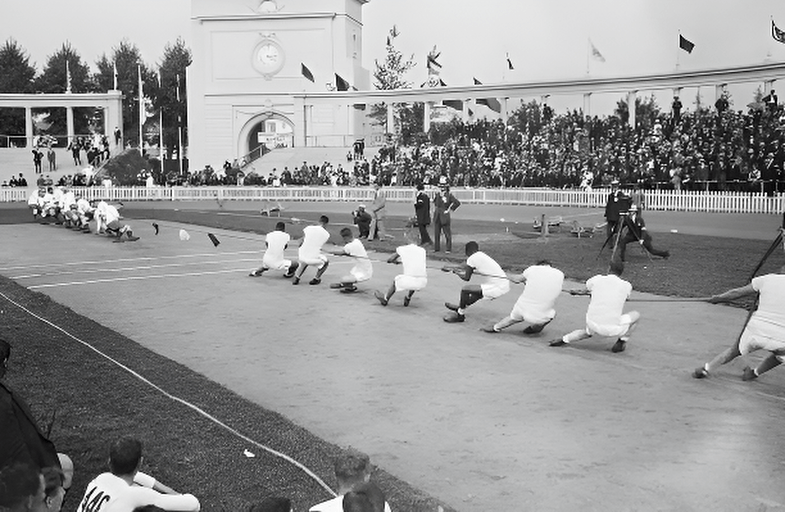
After the 1920 Games, the International Olympic Committee (IOC) eliminated tug of war from the Olympic program. The IOC highlighted several grounds for the decision, including the sport’s rising hazard. Some argue that the IOC just wants to minimize the number of Olympic sports.
Tug of War is still a popular sport today, and it is featured in many major events, including the World Games. Despite appeals for its restoration in the Olympics, the IOC has yet to respond to these efforts.
What are some examples of Tug of War variations in different countries?
Tug of War features diverse styles, with many cultures developing their own distinctive variations. In Spain’s Basque Country, communities engage in the dynamic Sokatira.
Japan celebrates Tsunahiki, a traditional version that draws entire neighborhoods into spirited competition. Indonesian communities enjoy Tarik Tambang, frequently showcased during national Independence Day events.
Meanwhile, Korea contributes its own cultural interpretation through Jul Parigi. These localized adaptations demonstrate the remarkable versatility and global appeal of Tug of War as both a sport and cultural tradition.
Health Benefits
Cardiovascular fitness:
Tug of War is a high-intensity exercise that can help to improve your cardiovascular fitness. It increases your heart rate and breathing rate, which helps to strengthen your heart and lungs.
Strength and power:
Tug of war is a great way to build strength and power. It works your major muscle groups, including your legs, back, arms, and core.
Muscle tone:
Tug of war can help to improve your muscle tone. It helps to tighten and tone your muscles, which can make you look and feel better.

Balance and coordination:
Tug of War requires you to coordinate your movements with your teammates. This can help to improve your balance and coordination, which can be beneficial for everyday activities.
Weight loss:
Tug of War is a great way to burn calories and lose weight. A 30-minute tug-of-war session can burn up to 400 calories.
Stress relief:
Tug of war can be a great way to relieve stress. The physical exertion and teamwork involved in a tug of war can help to clear your mind and improve your mood.
Conclusion
Tug of war is a fun game. Players pull a rope with strength. They work as a team and use smart moves. Anyone can play and enjoy it!
The tug of war game is a fun way to exercise. People still play it today, even in big competitions like the World Games.
Some people have called for its reinstatement in the Olympics, which might happen in the future. Play tug of war! It’s a fun and tough game. You’ll enjoy it!
Thank you for hanging with us. I’ll make an effort to go into more detail about this and give you something new in the future. Catch up on Sports Dribble and its Facebook, Instagram, and Twitter accounts.
Related Questions
For a multitude of reasons, dogs like tug of war. Tug and pull is a natural habit for dogs since it is something they would do when hunting or playing with other dogs.
Tug of war excites dogs physically and mentally. They use their strength, speed, and thinking skills to play.
Furthermore, tug-of-war may be an excellent method to interact with your dog and create trust.
Tug of war is usually safe for dogs. Follow these tips to keep it fun and safe for both of you.
To begin, make sure your dog is old enough to participate in a tug of war. Puppies under 6 months of age should not play tug of war since their teeth and jaws are still growing. Second, select a tug toy that is suitable for your dog’s size and strength.
A toy that is too little or too fragile can become a choking threat, but a toy that is too big or too firm might cause tooth damage in your dog. Finally, when playing tug of war with your dog, keep a tight eye on him and put an end to the game.
Strength: The team with the stronger members will have a better chance of winning.
Power: This is not just about how much weight you can lift, but also about how much force you can apply to the rope.
Technique: There are specific techniques that can help you to pull more effectively.
Teamwork: Everyone on the team needs to work together to win.
Mental toughness: It takes a lot of mental toughness to keep pulling when you’re tired and sore.
Excitement: Dogs typically growl when they are enthusiastic, and tug of war is a popular activity for many dogs. Growling might be a method for them to indicate how much they like the game.
Dominance: When playing tug of war, some dogs growl to demonstrate their dominance over the opposing dog or person. This is more likely in dogs that have not been properly socialized or have a history of hostility.
Subordination: When playing tug of war, dogs may growl to indicate subordination to the opposing dog or person. This is more typical in dogs who are inherently submissive or have been conditioned to obey.
Pain: When a dog is in pain, it may growl to tell another dog or person to stop. This is especially prevalent if the dog is being tugged too hard on the toy.

My name is Krishanu Das the founder of the Sports Dribble.
I am Accountant by profession but a Sports Blogger by passion.
I am passionate about sharing my all knowledge and experiences of sports, with my readers and every sports enthusiast.
